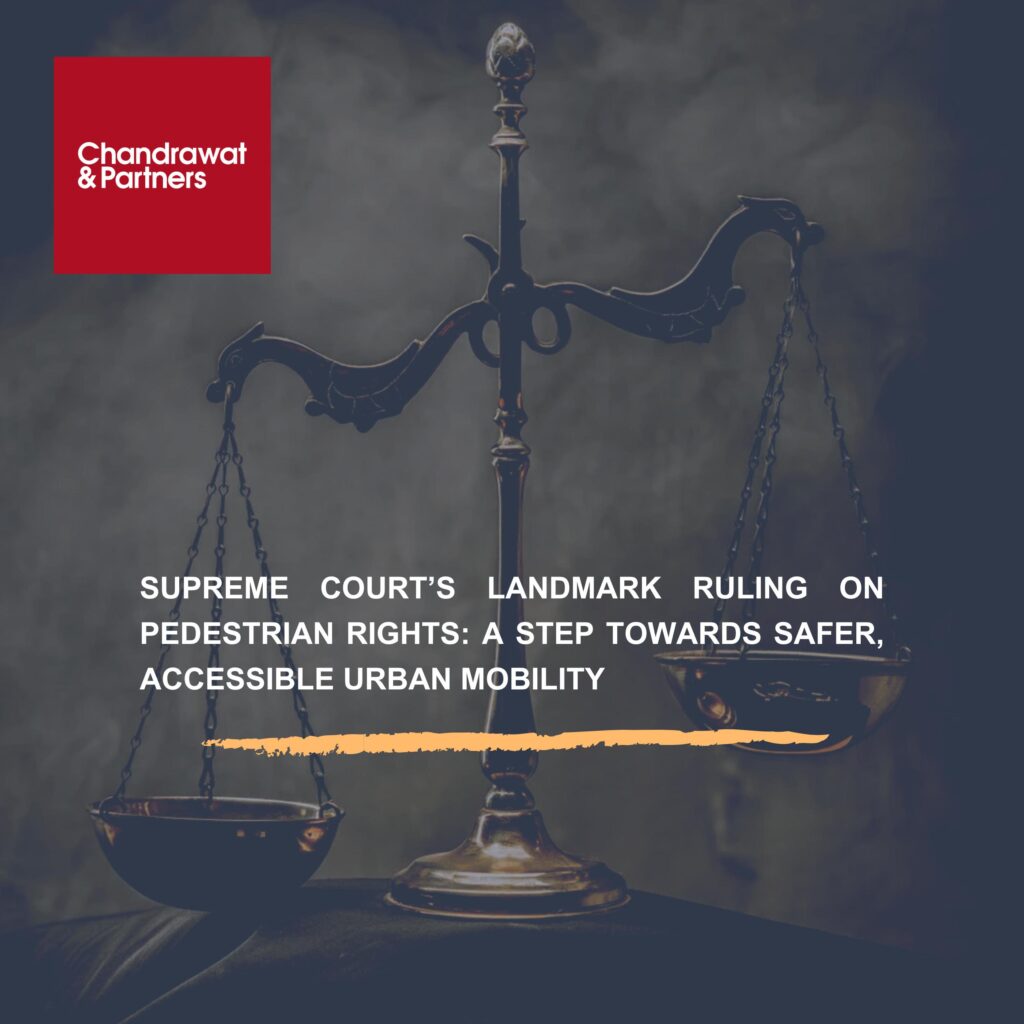Home > Recent Judgements > Supreme Court’s Landmark Ruling on Pedestrian Rights: A Step Towards Safer, Accessible Urban Mobility
May 15, 2025
Supreme Court’s Landmark Ruling on Pedestrian Rights: A Step Towards Safer, Accessible Urban Mobility
TSupreme Court of India delivered a landmark judgment underscoring the right to walk on unobstructed footpaths as an essential part of the fundamental right to life under Article 21 of the Indian Constitution. This pivotal ruling places pedestrian safety – especially for persons with disabilities at the heart of urban planning and governance, marking a major shift in how cities must be designed and maintained.
The Crux of the Judgment
The Supreme Court observed that pedestrian mobility, particularly on footpaths, is not a luxury but a basic constitutional right. The Court pointed out that the lack of accessible and obstruction-free pathways forces people, especially those who are visually impaired, elderly, or use mobility aids, to walk on roads putting their lives at grave risk.
The Court stated:
The right to use footpaths without obstruction is an essential facet of the right to life and dignity under Article 21 of the Constitution. Pedestrian infrastructure must be inclusive, safe, and universally accessible.
Directives Issued by the Court
To address this pressing issue, the Supreme Court issued a series of mandatory directions to all States and Union Territories (UTs):
- Formulate Pedestrian Safety Guidelines
- All states and UTs must formulate detailed guidelines for footpath design, construction, and maintenance within two months.
- These guidelines should ensure accessibility for persons with disabilities, in line with the Rights of Persons with Disabilities Act, 2016, and standards prescribed by the Indian Roads Congress (IRC) and Ministry of Housing and Urban Affairs.
- Remove Encroachments and Obstructions
- Municipal authorities are instructed to remove illegal encroachments, commercial stalls, and other obstructions that limit pedestrian use of sidewalks.
- Cities must strictly enforce zoning and urban planning laws to prevent re-encroachment.
- Inclusive Infrastructure
- All pedestrian pathways must be designed using universal design principles.
- Features such as tactile paving, ramps, railings, and auditory signals must be incorporated to support independent movement for the differently abled.
- Establishment of the National Road Safety Board
- The Court expressed dissatisfaction over delays in operationalizing the National Road Safety Board, mandated under the Motor Vehicles (Amendment) Act, 2019.
- It granted a final extension and warned that no further delays will be tolerated.
Why This Matters
India ranks among the highest globally in road fatalities, and a significant number of these involve pedestrians. According to data from the Ministry of Road Transport and Highways, thousands of pedestrians lose their lives each year due to poor urban infrastructure, lack of sidewalks, and road encroachments.
This ruling, therefore, is not just about footpaths—it’s about:
- Ensuring the dignity and safety of every citizen, regardless of physical ability.
- Creating inclusive cities** where people of all ages and needs can move freely and confidently.
- Holding authorities accountable for failure to maintain pedestrian infrastructure.
Looking Ahead: Implementation is Key
The success of this directive depends on:
- State compliance: States and UTs must not treat this as a mere administrative task, but as a constitutional obligation.
- Civil society involvement: NGOs, disability rights groups, and resident associations should participate in monitoring implementation.
- Public awareness: Citizens must be educated about their rights to safe pedestrian infrastructure and encouraged to report violations.
The Supreme Court has scheduled the matter for a compliance review hearing in July 2025, where it will evaluate the progress made by each state and UT.
Conclusion
The Supreme Court’s recognition of safe, accessible, and obstruction-free footpaths as a fundamental right under Article 21 is a transformative moment in India’s urban development narrative. This ruling reaffirms that cities must be built not just for vehicles, but for people.
In a country striving for inclusive growth and smart cities, this judgment is a powerful reminder that the right to walk is the right to live with dignity.
For more information or queries, please email us at
enquiries@chandrawatpartners.com





